37 A.D. Revival in Caesarea Under Peter
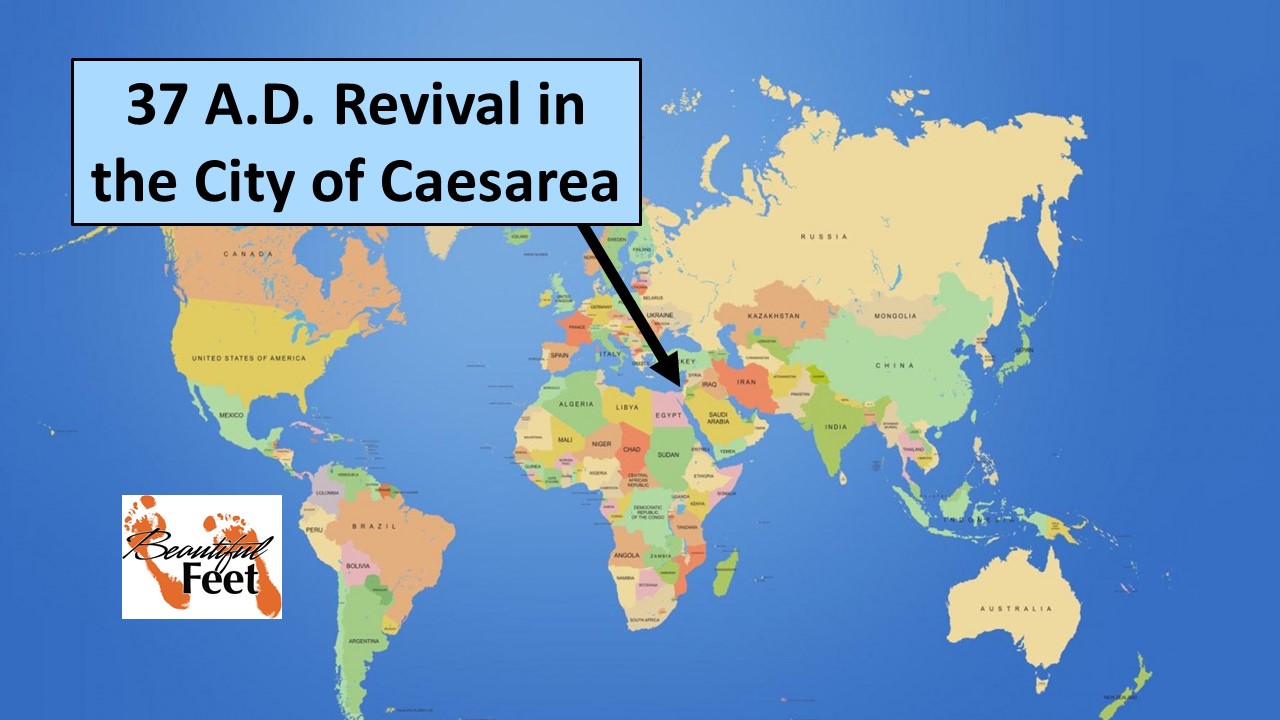
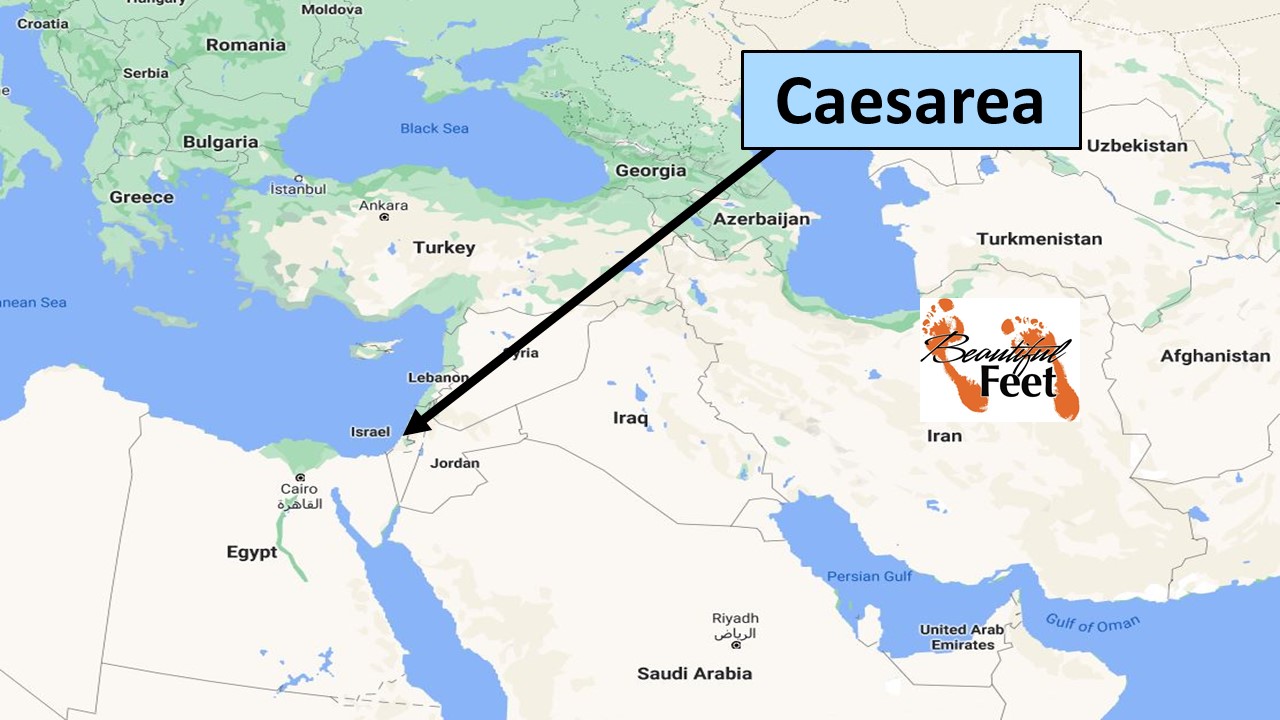
Caesarea was a coastal city along the Mediterranean Sea
The account of this revival can be read in Acts 10:1-48 and Acts 11:1-18.
Introduction
During times of genuine revival, it has been noticed that there was a “revival atmosphere” that covered the community, region, and in a few instances, it even encircled the globe. This “revival atmosphere” is what carried the Church along and caused it to spread throughout the Roman Empire. Here are the initial stages of the sweeping revival:
► 26 A.D. Revival Under John the Baptist
► 27 A.D. Revival Under Jesus and His Disciples
► 27 A.D. Revival in the Samaritan Village of Sychar
► 30 A.D. Revival on the Day of Pentecost
► 31 A.D. Revival in Samaria
These are just the areas of revival that are recorded in Scriptures. We can be assured that similar outbreaks were taking place wherever the believers went (Acts 1:8; 8:1; 8:4-5; 8:25; 8:40).
A Revival Movement was Underway
The seacoast city of Caesarea at this time undoubtedly had several house churches. There are no numbers of Christians recorded in Scriptures, but we do know that Philip preached there, probably in 31 A.D., or shortly thereafter (Acts 8:40). This was while the 31 A.D. Revival at Samaria was evidently ongoing.
We don’t know if Philip immediately took up residence in Caesarea upon his arrival in that seacoast city or not, but we do know that by 59 A.D., he had a home there, and living with him were his four daughters who had the gift of prophecy (Acts 21:8-9).
If Philip was living in Caesarea during the time leading up to the revival recorded in Acts 10, which seems to have begun in Cornelius’ home, we can be assured that Philip the Evangelist had a significant role to play in the lives of the believers in that city and region, and had also contributed significantly to the godly lifestyles being displayed by Cornelius and his entire family (Acts 10:2, 22).
Who Sparked this Revival?
With most revivals we can often find a key individual who may have orchestrated a prayer movement prior to the revival starting, but at Caesarea, at least in the home of Cornelius, it was God Himself who initiated the revival, when he sent an angel to put the revival into motion (Acts 10:3-8).
Extraordinary Prayer?
Many revivals can be traced back to extraordinary prayer being conducted by a small group of people, like what occurred at the 1949 Hebrides Revival. But with the revival in Caesarea, the only prayer we saw was connected with:
► Cornelius, whose “…prayers and gifts to the poor have been received by God as an offering” (Acts 10:4)!
► Peter, who was 30 miles to the south of Caesarea in the coastal town of Joppa. It was at noon when he was praying that he had a vision (Acts 10:9-17).
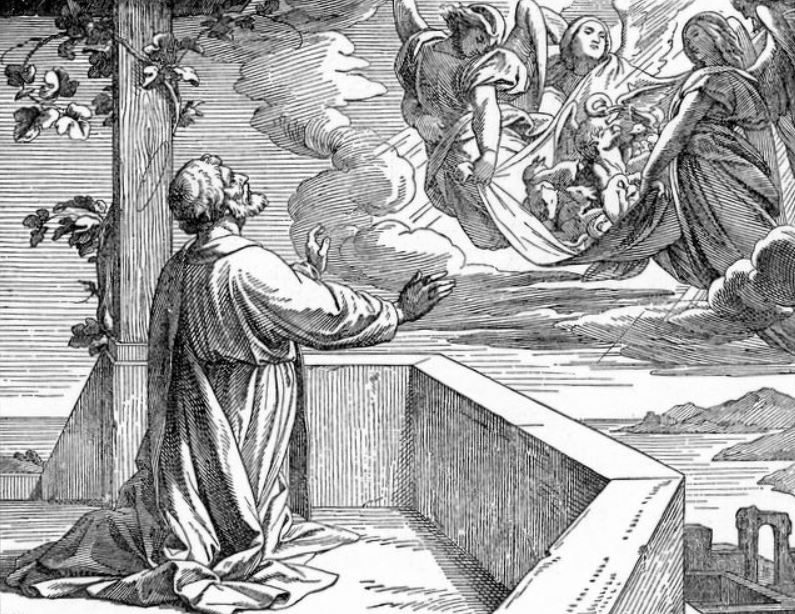
Peter’s vision of a sheet lowered from heaven
The Faith of Cornelius
Note how confident Cornelius was with the vision he received. He obeyed the angel’s message from God immediately by sending three men to tell Peter to come to his home (Acts 10:7-8).
Those three men arrived at the home Peter was staying at the next day at about noon (Acts 10:9). After telling Peter of their mission, they stayed the night, then left the next day with Peter and six Jewish men, arriving in Caesarea the following day (Acts 10:23-24; 11:12).
Cornelius was so confident in the vision he received, and the trust he had in his servants, that he knew how long it would take for his men to travel to Joppa, and then return. In anticipation for their return with Peter, Cornelius had “called together his relatives and close friends” to hear the message Peter was going to share with them (Acts 10:24, 33).
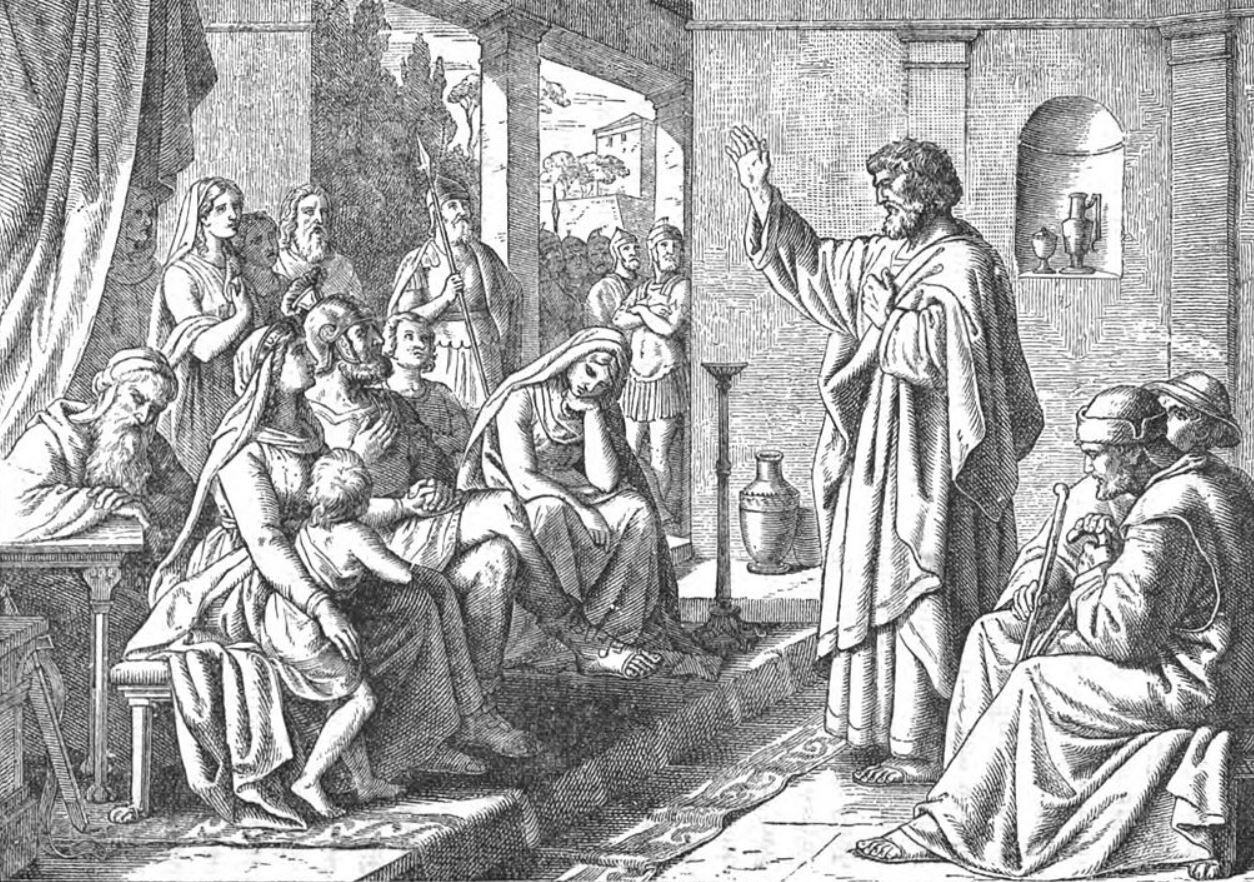
Peter preaching in Cornelius’ home
Peter’s Message to Gentiles
After the initial formalities and questioning between Peter and Cornelius, Cornelius wanted no more delay, and he said: “Now, we are all here, waiting before God to hear the message the Lord has given you” (Acts 10:33b).
Peter then shared his message (Acts 10:33-43), and would have continued, but was interrupted by the Holy Spirit when He came down upon these Gentiles. The Scriptures specifically state that “Even as Peter was saying these things, the Holy Spirit fell upon all who were listening to the message (Acts 10:44).
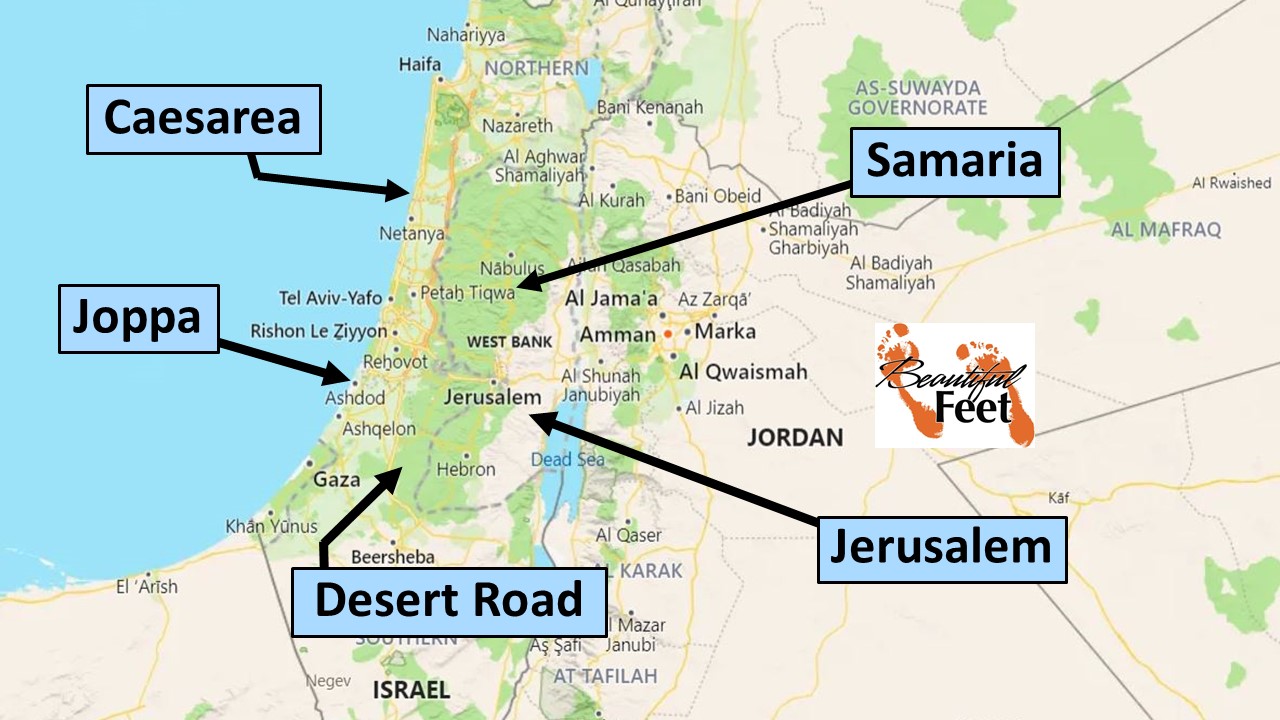
Locations mentioned in this revival account
Peter’s Two-Day Intensive Training
Following Jesus’ example during the revival that occurred in 27 A.D., in the Samaritan village of Sychar, Peter stayed for several days, evidently teaching and sharing about the life and ministry of Jesus, as well as passing on the commission to Cornelius and family of their responsibility to carry the message of salvation to all who will listen (Acts 1:8; Matthew 28:19-20; Mark 16:15; Luke 24:47).
Major Lesson Learned – Preserve the Fruit
Ongoing training is vital for a revival’s fruit to be preserved. It has repeatedly been seen that revivals last anywhere from a few months to a few years. Considering all the time committed to prayer and preaching that frequently precedes a genuine revival, it would be imprudent if the preparation for the revival didn’t include preparations on how to perpetuate the revival as long as possible, as well as how to preserve the harvest of souls that would occur once the revival among the believers begins.
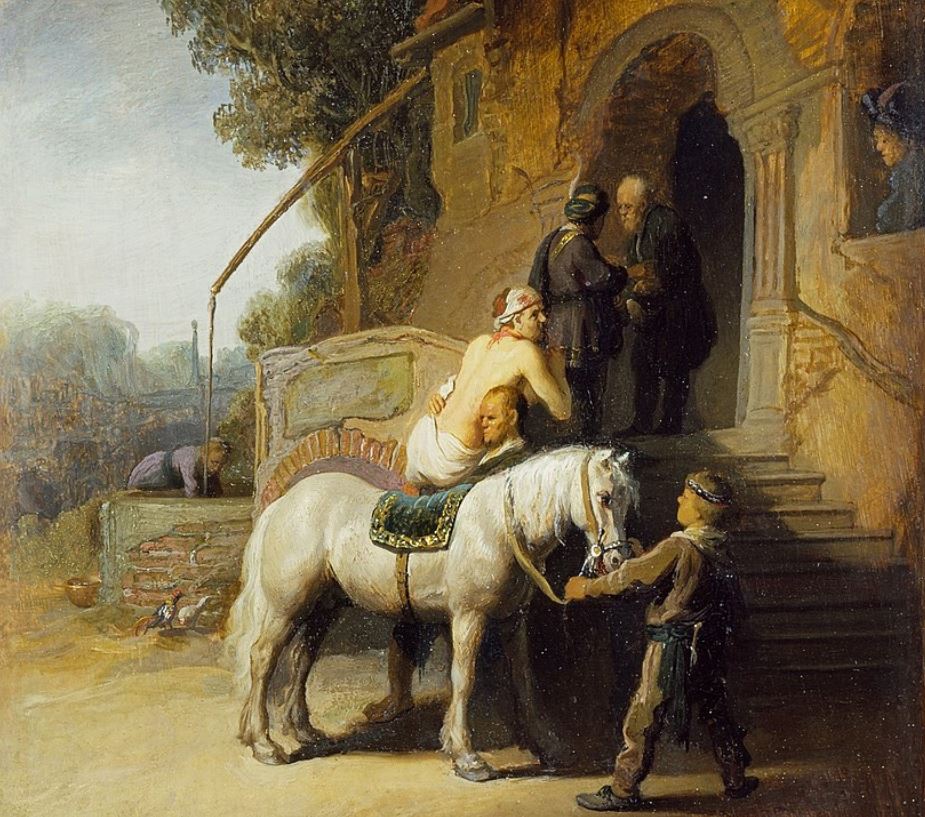
The Good Samaritan, leaving the Jewish man at the inn – Rembrandt circa 1633 (Luke 10:30-37)
First Gentiles?
Some Bible subheadings and Bible commentaries insinuate that the revival in Caesarea was the first time Gentiles received the Gospel, as well as the first time they received the baptism in the Holy Spirit. It isn’t our intention to make this a major point of debate, but we do want to indicate that prior to 31 A.D., when the revival in Caesarea occurred, many Gentiles had already placed their faith in Jesus as being the “Savior of the World” (John 4:42).
Evidence of Gentiles Having Received the Gospel before Acts 10
► The revival that occurred in 27 A.D. under Jesus and His disciples, shows us that many Gentiles placed their faith in Jesus as the Messiah. Those Gentiles stated that Jesus was the “Savior of the world” (John 4:39-42).
► There “was a Gentile, born in Syrian Phoenicia” (Mark 7:26) who referred to Jesus as “Son of David” (Matthew 15:22), a Messianic title. Jesus, in response to that woman’s declaration, said, “your faith is great,” and that meant that her faith in Jesus’ power to deliver and save was great (Matthew 15:28).
► During the 31 A.D. Revival in Samaria, many Gentiles believed the Gospel and were baptized (Acts 8:12).
► Also during the 31 A.D. Revival in Samaria, we see the first recorded incident of Gentiles receiving the baptism in the Holy Spirit (Acts 8:17).
► When Peter and John left the city of Samaria in 31 A.D., on their return to Jerusalem, they preached in many Samaritan villages along the way (Acts 8:25). Are we to assume that through all their preaching no Gentile embraced the Gospel, nor received the baptism in the Holy Spirit, like what just occurred in the city of Samaria?
► Following a message from an angel, Philip left the ongoing revival in the city of Samaria and traveled to the desert road leading to Gaza. It was there that he shared the Gospel with a Gentile, an Ethiopian eunuch, who believed and was baptized in water (Acts 8:26-39).
► After Philip left the Ethiopian eunuch on the desert road, he was found in the coastal town of Azotus (Ashdod), and it was from there, and in every village along the coast, all the way to Caesarea, that he preached the Gospel. Are we to assume that from all that ministry no Gentile received the Gospel and believed, even after he had such phenomenal results in the city of Samaria and with the Gentile on the desert road—the Ethiopian (Acts 8:40)?
Samaritans Were Gentiles
Some could raise the objection that the Samaritans were not Gentiles, and that they were half Jews and half Gentiles. The Samaritans were indeed a mixed group of people, beginning with only a very few Jews being left behind in 722 B.C. when the northern Kingdom of Israel was overthrown by the Assyrians. The Assyrians forcefully deported the Jews to other regions. It is assumed that there were a few Jews that remained behind after that deportation, and it was those that were said to have intermarried with those the king of Assyria resettled in their land. Those brought in to repopulate the area formerly known as the northern Kingdom of Israel were Gentiles from at least five different areas (2 Kings 17:24-25).
Evidence from Nehemiah’s Time that Samaritans Were Not Jews
Those living in Samaria at the time of Nehemiah (450 B.C.) did not consider themselves Jews. We see that confirmed in Nehemiah 2:10, when it is ready that the people of Samaria
were very displeased that someone had come to help the people of Israel.
That is another indication that there was a clear distinction between Jews and Samaritans only 272 years after those foreigners had been relocated into the area previously known as the Kingdom of Israel.
Another proof could be Nehemiah’s response to the mockery and ridicule coming against the Jews for intending to rebuild the walls around Jerusalem:
But when Sanballat, Tobiah, and Geshem the Arab heard of our plan, they scoffed contemptuously. “What are you doing? Are you rebelling against the king?” they asked (Nehemiah 2:19).
And Nehemiah’s response:
I replied, “The God of heaven will help us succeed. We, his servants, will start rebuilding this wall. But you have no share, legal right, or historic claim in Jerusalem (Nehemiah 2:20).
If this group of people, beginning in 722 B.C., were considered half-Jew and half-Gentile, how many generations does it take till they are finally considered Gentile? Seven hundred fifty years had passed, equating to around 19 generations (40 years per generation). Some say that at about 10 generations the DNA of some of our ancestors is no longer detectable.
Jesus Classified Samaritans as Gentiles
If we allow Scriptures to interpret Scripture, we will find that the Samaritans did not consider themselves Jews, and the Jews also did not consider Samaritans Jews. That only leaves one word to define Samaritans—and that is—Gentiles.
► The woman at the well, a Samaritan, in referring to Jesus and those who worship at the temple in Jerusalem, used the words, “you Jews,” and “we Samaritans,” indicating that she was of a distinctly different ethnic group (John 4:20).
► Following up on what the Samaritan woman said, and reinforcing her statement, Jesus indicated that she was not a Jew, and that she and her people were a distinctly different people group, when He said, “You Samaritans” and “we Jews” (John 4:22).
So, it is a misnomer to say that the first occurrence of Gentiles receiving the Gospel, as well as the baptism in the Holy Spirit, was at Caesarea.
For more historical information on the formation of the Samaritans, see these two revival stories:
► 27 A.D. Revival in the Samaritan Village of Sychar
► 521 B. C. Revival Under Zerubbabel
We Welcome Your Feedback
With Jesus defining Samaritans as Gentiles, and after other examples of Gentiles being baptized in water, as well as being recipients of the Holy Spirit, we welcome your response to these questions:
1. With Peter already witnessing Gentiles being water baptized and receiving the Holy Spirit in the city of Samaria (Acts 8:14-17), why would he ask the question about the appropriateness of baptizing Cornelius’s household (Acts 10:44-48 and Acts 11:15-18)?
2. Hadn’t the other six Jews, who accompanied Peter from Joppa to Caesarea, already heard about Gentiles of Samaria having been water baptized, as well as being baptized in the Holy Spirit (Acts 8:14-17)? Notice that there were objections coming from these six Jews (Acts 11:18). What were these Jews objecting to? Were they objecting because God poured out His Spirit on Gentiles, or that He did it before they were water baptized, or that He granted Romans the privilege of eternal life following repentance?
3. Notice in Acts 15:14-19 where we read
“about the first time God visited the Gentiles”.
This was Peter referring to the outpouring of the Spirit at Cornelius’ house in Caesarea. Yet we know that God had already visited the Gentiles on other occasions. How is Acts 15:14-19 to be reconciled with other locations where we know Gentiles were already converted, water baptized, as well as baptized in the Holy Spirit?
Return to List of Revival Stories
Chet & Phyllis Swearingen:
Office: (260) 920-8248
romans1015@outlook.com
Beautiful Feet
P.O. Box 915
Auburn, IN 46706

